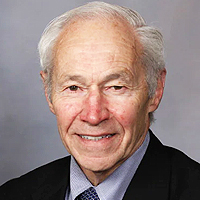Abstract
Research Article
Cyclical Cosmology, Energy and Curvature of Space-Time
Sanjay Bhushan*
Published: 28 November, 2024 | Volume 7 - Issue 2 | Pages: 159-161
Cyclical cosmic conditions illuminate profound philosophical and physical implications regarding the fundamental nature of the universe. From this perspective, a singularity could actually symbolize a transformation of the underlying structures and laws of our universe, providing insights into the relationships among energy, curvature, and existence of the universe itself. In cyclical cosmology, the universe can be understood as existing in two distinct states: a static potential state and an active kinetic state. Quantum mechanics also reinforces the belief that even in seemingly empty spaces, vacuum fluctuations and differences in potential can give rise to emergent phenomena.
Read Full Article HTML DOI: 10.29328/journal.ijpra.1001102 Cite this Article Read Full Article PDF
Keywords:
Cyclical cosmology; Space-time; Energy dynamics
References
- Bhushan S. Energy transformation and the emergence of space-time: A classical-quantum unified framework. Phys Int. 2024;15(1):1-6. Available from: https://doi.org/10.3844/pisp.2024.1.6
- Einstein A. Relativity: The special and general theory. New York: H. Holt and Company; 1920. Available from: https://www.ibiblio.org/ebooks/Einstein/Einstein_Relativity.pdf
- Jacobson T. Thermodynamics of spacetime: The Einstein equation of state. Phys Rev Lett. 1995;75(7):1260-3. Available from: https://doi.org/10.1103/PhysRevLett.75.1260
- Penrose R. Gravitational collapse and space-time singularities. Phys Rev Lett. 1965;14(3):57-9. Available from: https://doi.org/10.1103/PhysRevLett.14.57
- Hawking S. A brief history of time. New York: Bantam Books; 1988.
- Penrose R. Cyclic cosmology and the arrow of time. Int J Mod Phys D. 2010;19(14):2321-33.
- Gambini R, Pullin J. The emergence of classical time from a quantum gravity perspective. Int J Mod Phys D. 2009;18(3):319-29.
- Hartle JB, Hawking SW. Wave function of the universe. Phys Rev D. 1983;28(12):2960-75. Available from: https://doi.org/10.1103/PhysRevD.28.2960
- Dayalbagh Educational Institute. Discourse by Rev. Prof. P.S. Satsangi Sahab. 2024 Feb 25. Available from: https://www.dei.ac.in/dei/edei/files/2024/Discourse_Rev_Prof_PS_Satsangi_Sahab_25_02_2024.pdf
- Rovelli C. Emergent time and the origin of time’s arrow. Found Phys. 2012;42(10):1062-76.
- Bhushan S. Universal matter synthesis and management via constructive resonance: Pioneering advancements in physical sciences and applied systems. Int J Fundam Phys Sci. 2023;13(3):30-40. Available from: https://doi.org/10.14331/ijfps.2023.330160
- Barbour JB. Time and quantum gravity: Philosophical perspectives. Stud Hist Philos Mod Phys. 2020;72:20-33.
- Sakharov AD. Vacuum quantum fluctuations in curved space and the theory of gravitation. Sov Phys Dokl. 1967;12(11):1040-1. Available from: https://ayuba.fr/pdf/sakharov_qvf.pdf
- Verlinde E. On the origin of gravity and the laws of Newton. J High Energy Phys. 2011;2011(4):29. Available from: https://doi.org/10.1007/JHEP04(2011)029
- Einstein A. Quantentheorie des einatomigen idealen Gases. Sitzungsber Preuss Akad Wiss. 1925;1:3. Available from: https://www.scirp.org/reference/referencespapers?referenceid=3281121
- Callender C. What makes time special? Oxford: Oxford University Press; 2017. Available from: https://global.oup.com/academic/product/what-makes-time-special-9780198797302?cc=us&lang=en&
- Anderson E. The problem of time in quantum gravity. Found Phys. 2017;47(3):174-203.
- Smolin L. Three roads to quantum gravity. New York: Basic Books; 2001. Available from: https://www.researchgate.net/publication/252914350_Book_Review_Three_roads_to_quantum_gravity_Basic_Books_2001
Figures:
Similar Articles
-
Time Electron TheorySyed Munim Qadri*. Time Electron Theory. . 2024 doi: 10.29328/journal.ijpra.1001081; 7: 026-039
-
Quantum System Dynamics: Harnessing Constructive Resonance for Technological Advancements, Universal Matter Creation and Exploring the Paradigm of Resonance-induced GravitySanjay Bhushan*. Quantum System Dynamics: Harnessing Constructive Resonance for Technological Advancements, Universal Matter Creation and Exploring the Paradigm of Resonance-induced Gravity. . 2024 doi: 10.29328/journal.ijpra.1001084; 7: 053-058
-
Estimating the Minimum Possible Deceleration of Cosmic Expansion Post-inflationDev Sharma*. Estimating the Minimum Possible Deceleration of Cosmic Expansion Post-inflation. . 2024 doi: 10.29328/journal.ijpra.1001089; 7: 080-085
-
Cyclical Cosmology, Energy and Curvature of Space-TimeSanjay Bhushan*. Cyclical Cosmology, Energy and Curvature of Space-Time. . 2024 doi: 10.29328/journal.ijpra.1001102; 7: 159-161
Recently Viewed
-
Organic compositional analysis of propellant powders using monolithic material sorption extraction (MSSE)-a feasibility studyJason W Birkett*,Ellen Goudsmits,George P Sharples. Organic compositional analysis of propellant powders using monolithic material sorption extraction (MSSE)-a feasibility study . J Forensic Sci Res. 2017: doi: 10.29328/journal.jfsr.1001008; 1: 068-076
-
Effect of Lower Extremity Training in Diabetic Peripheral NeuropathyAnn Reena Rajan*. Effect of Lower Extremity Training in Diabetic Peripheral Neuropathy. J Nov Physiother Rehabil. 2024: doi: 10.29328/journal.jnpr.1001056; 8: 001-004
-
Intersecting Pathways: Examining Hildegard Peplau's and Rosemarie Parse's Nursing Theories through a Comparative LensMehtab Lalwani*, Rafat Jan and Salma Rattani. Intersecting Pathways: Examining Hildegard Peplau's and Rosemarie Parse's Nursing Theories through a Comparative Lens. Clin J Nurs Care Pract. 2023: doi: 10.29328/journal.cjncp.1001046; 7: 009-014
-
Sinonasal Myxoma Extending into the Orbit in a 4-Year Old: A Case PresentationJulian A Purrinos*, Ramzi Younis. Sinonasal Myxoma Extending into the Orbit in a 4-Year Old: A Case Presentation. Arch Case Rep. 2024: doi: 10.29328/journal.acr.1001099; 8: 075-077
-
Spontaneously Reduced Focal Atrial Tachycardia after Cannabis OverdoseBoudar Aicha*,Cheikh Bay Ahmed,Haboub Mariem,Habbal Rachida. Spontaneously Reduced Focal Atrial Tachycardia after Cannabis Overdose. J Cardiol Cardiovasc Med. 2025: doi: 10.29328/journal.jccm.1001202; 10: 001-004
Most Viewed
-
Evaluation of Biostimulants Based on Recovered Protein Hydrolysates from Animal By-products as Plant Growth EnhancersH Pérez-Aguilar*, M Lacruz-Asaro, F Arán-Ais. Evaluation of Biostimulants Based on Recovered Protein Hydrolysates from Animal By-products as Plant Growth Enhancers. J Plant Sci Phytopathol. 2023 doi: 10.29328/journal.jpsp.1001104; 7: 042-047
-
Sinonasal Myxoma Extending into the Orbit in a 4-Year Old: A Case PresentationJulian A Purrinos*, Ramzi Younis. Sinonasal Myxoma Extending into the Orbit in a 4-Year Old: A Case Presentation. Arch Case Rep. 2024 doi: 10.29328/journal.acr.1001099; 8: 075-077
-
Feasibility study of magnetic sensing for detecting single-neuron action potentialsDenis Tonini,Kai Wu,Renata Saha,Jian-Ping Wang*. Feasibility study of magnetic sensing for detecting single-neuron action potentials. Ann Biomed Sci Eng. 2022 doi: 10.29328/journal.abse.1001018; 6: 019-029
-
Pediatric Dysgerminoma: Unveiling a Rare Ovarian TumorFaten Limaiem*, Khalil Saffar, Ahmed Halouani. Pediatric Dysgerminoma: Unveiling a Rare Ovarian Tumor. Arch Case Rep. 2024 doi: 10.29328/journal.acr.1001087; 8: 010-013
-
Physical activity can change the physiological and psychological circumstances during COVID-19 pandemic: A narrative reviewKhashayar Maroufi*. Physical activity can change the physiological and psychological circumstances during COVID-19 pandemic: A narrative review. J Sports Med Ther. 2021 doi: 10.29328/journal.jsmt.1001051; 6: 001-007

HSPI: We're glad you're here. Please click "create a new Query" if you are a new visitor to our website and need further information from us.
If you are already a member of our network and need to keep track of any developments regarding a question you have already submitted, click "take me to my Query."























































































































































